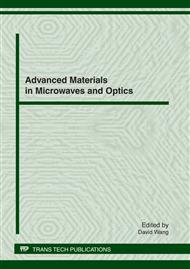p.609
p.616
p.623
p.629
p.635
p.640
p.646
p.652
p.659
The Study of the MEMS Gyro Zero Drift Signal Based on the Adaptive Kalman Filter
Abstract:
The random noise is an important factor that affects the precision of the MEMS gyroscope. Based on the time-series analysis method, the AR model of the MEMS gyro drift signal is established. Then the adaptive Kalman filter is used to filter the drift signal. Comparison the original signal and the signal filtered by the adaptive Kalman filter, we found that the adaptive Kalman filter has the good filtering effect in the processing the zero drift signal of the MEMS gyro.
Info:
Periodical:
Pages:
635-639
Citation:
Online since:
January 2012
Authors:
Price:
Сopyright:
© 2012 Trans Tech Publications Ltd. All Rights Reserved
Share:
Citation:


